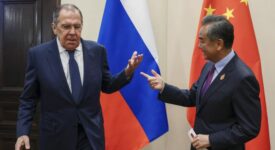The trade diversion effects caused by the US-China trade war are creating winners and losers as they reshape global supply chains. While Asia’s emerging economies have reportedly been the big winners, half of the Japanese companies have seen their profits hurt by the trade war and related global slowdown. In the machinery sector, however, Japan – like the European Union – has been a beneficiary of the trade diversion effects. Separately, Japan’s ¥1.59 trillion ($14.2 billion) trade deficit in fiscal 2018 – the first in three years – is for a large part attributed to the slowdown in the Chinese economy, due to the intensifying US-China trade war.
Yet, despite the overall gloomy picture, more than a few Japanese companies also benefit from improvements in the treatment of Japanese firms by local Chinese governments. For instance, the city of Dalian stepped up its efforts to reinforce cooperation under the slogan “Deepen the relationship with Japan” since late 2018. These welcoming attitudes are explained by the stark improvement in recent years in political relations between China and Japan at the highest political level. Chinese President Xi Jinping has been eager to mend ties, arguably largely as a diversion away from the confrontation with the United States.
As the US-China trade war evolves into a state of permanent conflict at the trade-tech nexus, Japanese policymakers are forced to rethink where their national interests lie and how to best act on these interests. Like most European capitals, Tokyo wants to avoid being forced into a binary choice between Washington and Beijing. Japan’s conditional engagement with China’s Belt and Road Initiative (BRI) as well as the signing of a ‘third countries business cooperation MoU’ exemplifies this.
More than European governments, however, most Japanese policymakers and experts are clear on the fact that, when push comes to shove, decision-makers must take sides whether they like it or not. And that then, considering the fact that the US is Japan’s ally and protector – keeping more than 50,000 military personnel in the country – Tokyo should take a stance consistent with Washington in its China policy while at the same time investing in stable Sino-Japanese relations to avoid serious confrontation. Hence, Tokyo effectively banned Huawei from its 5G network, saying it will exclude equipment with security risks.
The conclusion of the US-Japan trade agreement, signed on 7 October 2019 – less than six months after the start of negotiations – needs to be considered with this larger picture in mind. Japanese observers, however, have criticized the agreement for economic and political reasons. So what does the trade deal offer Japan? Prime Minister Abe’s decision to sign the trade agreement can be regarded as an attempt to avoid a worst-case scenario for Japan’s economy and a tactical move to please Trump and support Washington in its trade war with China. Separately, the deal is said to potentially bolster the US’s attempts to force Beijing into acquiescing to its demands by raising pressure on Beijing.
A proper understanding of Tokyo’s action thus requires thinking beyond tariffs and trade, considering today’s geopolitical competition, shaped by the fourth industrial revolution. The contest is open for the leadership in the development and the applications of emerging high-tech, and thereby the writing of the norms and the rules that will govern their use. Towards the future, more US pressure to support – or at least side with – it in this contest may be expected in various fields, including on export controls on emerging technologies. Although Japan – much like the EU and its member states – does not approve Trump’s tariff war, there are reasons for Japan to cooperate with the US in this bigger confrontation. At the same time, aiming for greater strategic autonomy, Japan’s Sony and NTT recently announced a partnership with the American company Intel to work on 6G mobile technology.
Most Japanese policymakers and observers seem to agree that the country’s national interest lies in working closely with the US and encouraging China to act responsibly, also as a way to contribute to the stability of the world order. As the US-China confrontation deepens, the biggest challenge for Japan is arguably to adopt a coherent policy and maintain cooperation with China. This is different – and more difficult – from the years since the 1971 “Nixon-shock”, when US President Richard Nixon moved towards reconciliation with China without consulting Japan. Simply put, Japan’s key challenge in the past decades has been to respond to joint actions between the United States and China that exclude Japan. Now, the main challenge is to take a stance consistent with the US while managing stable relations with China.
For many years already, the Japanese government has walked a fine line with China between cooperation and resistance. While deepening efforts to engage with China, for example on BRI, the Japanese government is working to keep China from dominating the Indo-Pacific region and the high-tech field. More than EU member states, the Japanese government acts on the understanding that it needs to cooperate with the US in dealing with the trade-tech stand-off and the struggle for geopolitical hegemony. The outcome of the 2020 American presidential election may make for cosmetic changes, but is unlikely to change the US’ confrontational stance towards China – and, by extension, Japan’s challenge in this regard.
‘Navigating the US-China Trade-Tech Stand-Off: The Case of Japan’ – Opinion by Maaike Okano-Heijmans – Clingendael / The Netherlands Institute of International Relations.
The Opinion can be downloaded here
Article Categories:
THINK-TANK






